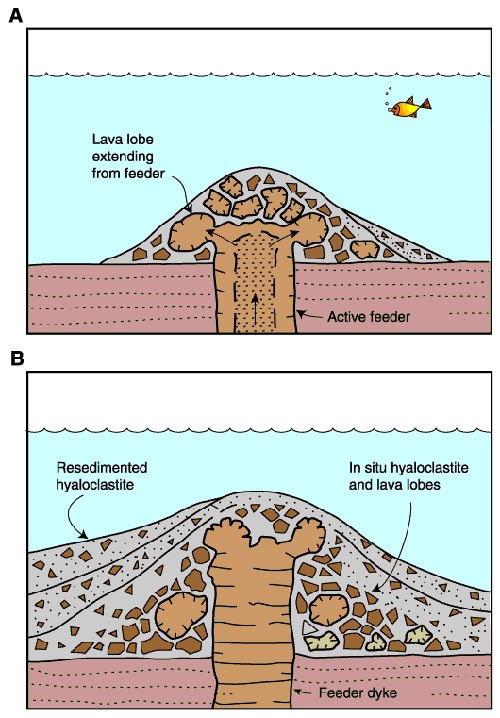When we logged the Stairway to Heaven Cache, I noticed this hidden gem. How often do you get a perfect example of a hyaloclastite right in downtown Vancouver when most of the easily accessible examples of this rock are in Iceland and Antarctica. Now you do not have to go to Iceland or Antarctica – lucky you.
A Hyaloclastite is a volcanic rock consisting of glassy larger pieces contained in a fine-grained matrix dominated by glassy shards or smaller pieces. Hyaloclastite breccias are typically products of volcanic eruptions into water. They occur in all types of volcanoes that occur under water such as under glaciers, under shallow water such as beaches and in deeper water such as at seamounts. Hyaloclastite ridges, formed by subglacial eruptions during the last glacial period, are a prominent landscape feature of Iceland, Antarctica and British Columbia. Hyaloclastite is found at subglacial volcanoes and formed when lava erupts through a thick glacier or ice sheet.

When a volcano erupts under water, the hot rock comes into contact with the cold sea and the outer portion of the rock is cooled instantly and forms a glassy type of rock called obsidian. Then the hot interior volcanic flow travels along the underwater floor and picks up whatever is lying on the surface. (A breccia is a rock containing angular pieces and a conglomerate is a rock which contains rounded pieces.) Most hyaloclastite contain glassy breccia from the initial cooling and some pick up rounded cobbles from the movement across the surface they are traveling on. The rock which comes out of a volcano is very often basalt which is dark coloured, but there are other types too.

The above is a good example of hyaloclastite.
To log this cache, visit the hyaloclastite rock and tell me: (If possible, please use the e-mail option rather than the messenger option)
- Is the rock outcrop rounded or jointed (angular)?
- Is the main rock dark coloured or light coloured?
- What do you think the round cobble sized clast (rock within the rock) at GZ is? (Hint – it is the most common rock in the Granitic Coast Mountain Range.)
- What rock is the stairs made out of, hyaloclastite or basalt? (Hint look for inclusions in the rock, if there are inclusions, it is hyaloclastite and if there are no inclusions, it is basalt)
- And just for the exercise, count the number of stairs.